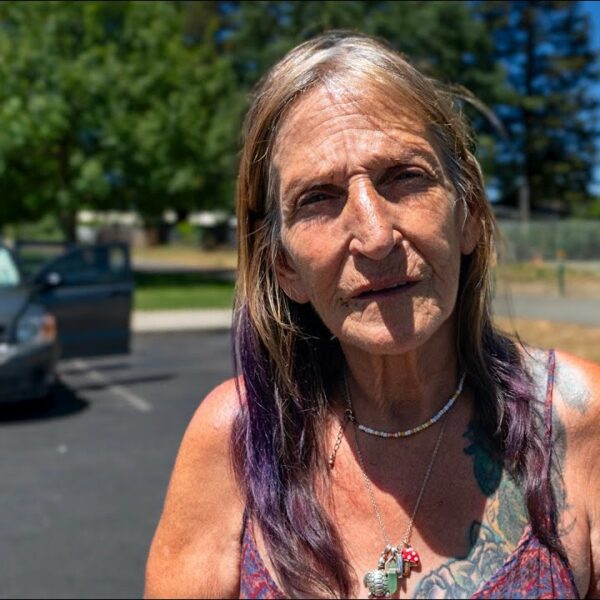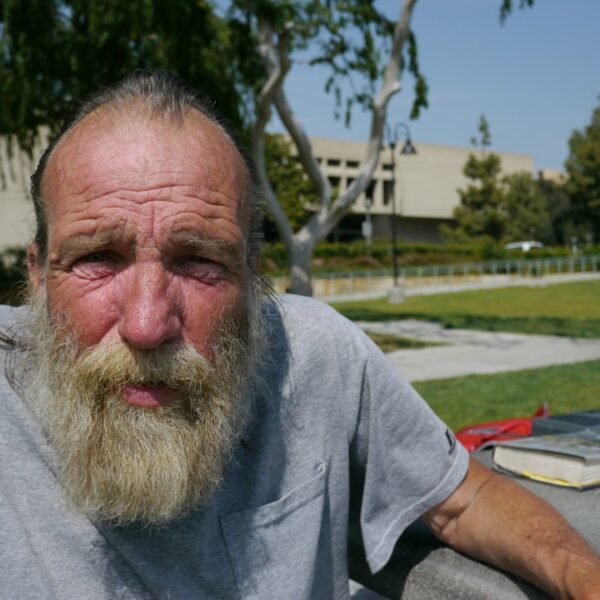Experts Say a Declaration Could Open the Door to Real Solutions—or Amount to Little More Than Political Posturing
Here’s what you need to know…
“I’m a senior citizen, 70+, and the apartments here are outrageous in price,” said Felisa in an interview with Invisible People reporters.
Felisa, a struggling diabetic woman, was living in her van when we caught up with her. She explained how the local frail senior population could not afford to rent on Social Security income, and she spoke of affordable housing as a crisis.
Will the president of the United States concur?
A Possible Emergency Declaration: What It Means and Why Now
Last month, several reputable news sources reported that President Donald Trump and his constituents were heavily considering declaring a National Housing Emergency. Such a decision could completely alter the housing market and US economy, but perhaps in unexpected ways if history were to repeat itself.
Reports have surfaced across mainstream media, with some lauding the decision as advantageous and others claiming it is merely a political ploy with no real substance to measure. As of early October 2025, no official stance has been taken. However, Treasury Secretary Scott Bessent stated that the administration is considering enacting the National Emergencies Act of 1976. Doing so would allow the sitting president to proclaim that the US housing market is in a state of emergency.
If all goes according to plan, this declaration could significantly boost the nation’s affordable housing supply via one or more of the following avenues:
- Rectifying federal policies and zoning restrictions – we have seen this approach work in other countries like New Zealand.
- Encouraging construction by lowering labor prices and material costs
- Lowering closing costs for home purchasers
- Making use of abandoned and unoccupied spaces like former office buildings and shopping malls to create affordable housing in these locations and more.
Financial analysts are torn as to whether this could help the housing market reach its necessary “tipping point,” as Pete Carroll told Newsweek, or send us all back to the drawing board, as has historically been the case.
The Lessons—and Warnings—From Past Housing Crises
We haven’t seen a move like this since the 2008 housing bubble/recession, when then-President Barack Obama notoriously issued a bank bailout in response to a housing affordability crisis. The bailout infamously backfired, and many claim it sent us reeling into the abyss of a housing market that we see today.
This illustrates how acknowledging the crisis is only half the solution. How the president moves forward with addressing that crisis is equally important to resolving it.
Advocates Urge Action, But Warn Against Political Theater
Affordable housing is an increasingly bipartisan issue, but each side of the political aisle has a drastically different take on how to fix things.
In a one-on-one interview with Invisible People reporters, Rosanne Haggerty, President of Community Solutions, urged Americans to take a stance that favors affordable housing, but to exercise caution and beware of possible political deception and lip service designed to sway voters.
Community Solutions has successfully helped over 42 communities attain a measurable reduction in homelessness, with 15 of those communities achieving a functional zero measurement for one or more subsectors of the homeless population.
Haggerty and her team attribute housing, services, and the use of by-name data to much of that success. To that end, Haggerty supports any positive action that sincerely addresses the housing shortage, provided it is constructive and not counterproductive.
“High costs of housing and homelessness are not isolated challenges; they reflect the critical shortage of housing nationwide and policy failures that leave people with the fewest resources and greatest challenges last in line for available housing,” she said. “If declaring a national housing emergency clears the way for policies that increase supply, make it faster and cheaper to build, and reduce barriers, it could be a powerful step toward addressing America’s critical housing shortage.”
The Mixed Messages: Declaring an Emergency While Criminalizing Homelessness
Perhaps the most significant barrier of all, however, is the double message Americans continue to receive about homelessness from city leaders at the podiums all the way to the president in the White House.
On one hand, these leaders claim to ponder the possibility of a housing emergency. On the other hand, they continue drafting laws that criminalize the unhoused community for simply engaging in acts of survival.
Meanwhile, mainstream media continues spewing false narratives and rhetoric that incites violence against our neighbors without walls. For these reasons and many more, Haggerty warns voters to be wary of empty promises and political posturing.
“Without a clear focus on proven strategies, a declaration is nothing more than political posturing,” she said. “We need rapidly scaling permanent housing solutions, investing in supportive services, and targeting resources to the communities and populations most in need.”
The Proven Solution: Housing and Services, Not Handcuffs
Housing and services continue to be proven strategies in the war against homelessness. Yet, our president deploys military forces to clear homeless encampments. We must demand an actionable blueprint that prioritizes humanity through housing over handcuffs.
This is a developing story. As of today, no formal declaration of a National Housing Emergency has been issued. That does not mean we need to sit around and wait.
Demand Real Housing Solutions
Right now, 7.1 million affordable homes are missing from the low-income renter market, while nearly half of all renters, 49% to be exact, are spending more than 30% of their income on housing.
Rental rates have outpaced wage growth by a wide margin. That margin sits firmly at 325% over the last 37 years. This is why homelessness has reached historic highs.
Be sure to remind your local representatives that laws that legally punish homeless people for sleeping outside do not boost the number of available affordable homes. Only housing can do that.













